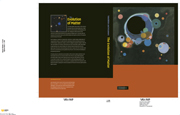Book contents
- Frontmatter
- Contents
- Introduction
- Part I The elements
- 1 Isotopes: weights and abundances
- 2 Introduction to the Universe: the baryonic matter
- 3 Element and isotope abundances: reference collection
- 4 Cosmological nucleosynthesis: production of H and He
- 5 Stellar nucleosynthesis: lower-mass stars and the s-process
- 6 Stellar nucleosynthesis: r- and associated processes
- 7 Timing of stellar nucleosynthesis
- 8 Chemical evolution of the Galaxy
- Part II Early solar system: nebula formation, evolution and lifetime
- Part III Accretion of the Earth
- Part IV Global evolution of the Earth
- References
- Glossary
- Abbreviations
- Meteorites, rocks and minerals
- Index
2 - Introduction to the Universe: the baryonic matter
Published online by Cambridge University Press: 04 September 2009
- Frontmatter
- Contents
- Introduction
- Part I The elements
- 1 Isotopes: weights and abundances
- 2 Introduction to the Universe: the baryonic matter
- 3 Element and isotope abundances: reference collection
- 4 Cosmological nucleosynthesis: production of H and He
- 5 Stellar nucleosynthesis: lower-mass stars and the s-process
- 6 Stellar nucleosynthesis: r- and associated processes
- 7 Timing of stellar nucleosynthesis
- 8 Chemical evolution of the Galaxy
- Part II Early solar system: nebula formation, evolution and lifetime
- Part III Accretion of the Earth
- Part IV Global evolution of the Earth
- References
- Glossary
- Abbreviations
- Meteorites, rocks and minerals
- Index
Summary
The major goal of Part I of the book is to present the observed abundances of the elements and isotopes and their variations in space and time, describe the relevant nucleosynthetic processes and outline the evolution of the elements in the Galaxy. In order to provide a context for the observations and models, this chapter is a brief excursion through the Universe, as a unique assembly of matter, and the galaxies within it. Only the small visible baryonic part of the assembly is considered here; it is ≈ 0.04 of the total. Small but important, as we are made of it! To appreciate dark matter, dark energy etc., we refer the reader to the recent book by Peacock (1999), and also to the fascinating breakthrough in understanding the Universe following from recent measurements of the microwave background radiation and high-redshift supernovae (e.g. Spergel et al., 2003).
In Fig. 2.1 the major constituents of the evolving Universe are shown schematically together with the relevant interactions and time scales. The lightest elements, H and He, originated simultaneously with the Universe, in a single explosion-like event, the Big Bang, for which the age is now reliably known, 13.7 ± 0.2 Gyr (Section 4.3). From denser fragments of the early expanding Universe galaxies were formed, giant stellar systems comprising most of the baryonic mass of the Universe.
- Type
- Chapter
- Information
- The Evolution of MatterFrom the Big Bang to the Present Day, pp. 19 - 23Publisher: Cambridge University PressPrint publication year: 2008

